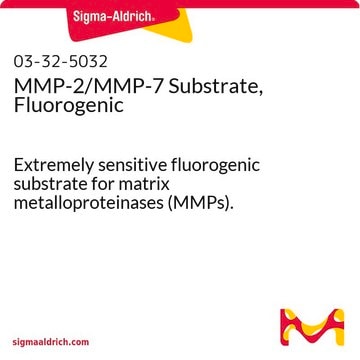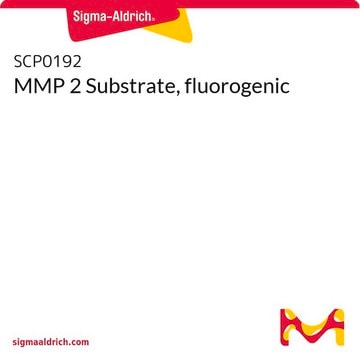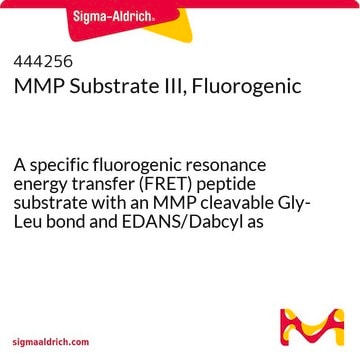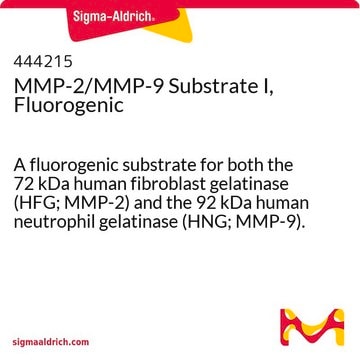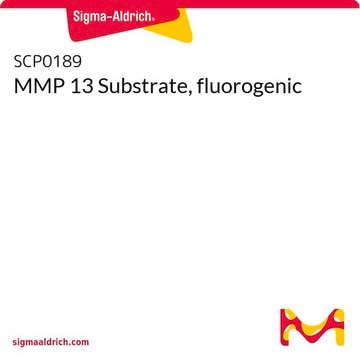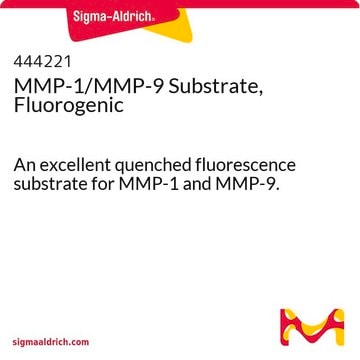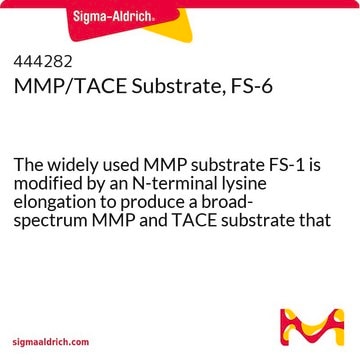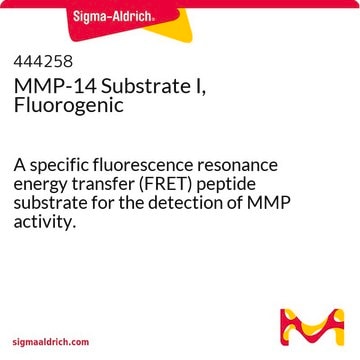SCP0193
MMP Substrate
≥95% (HPLC), lyophilized
Synonim(y):
FS-6
Wybierz wielkość
988,00 zł
Wybierz wielkość
About This Item
988,00 zł
Polecane produkty
Nazwa produktu
MMP Substrate,
Próba
≥95% (HPLC)
Formularz
lyophilized
skład
Peptide Content, ≥75%
warunki przechowywania
protect from light
temp. przechowywania
−20°C
Amino Acid Sequence
Opis ogólny
Działania biochem./fizjol.
Kod klasy składowania
11 - Combustible Solids
Klasa zagrożenia wodnego (WGK)
WGK 3
Temperatura zapłonu (°F)
Not applicable
Temperatura zapłonu (°C)
Not applicable
Wybierz jedną z najnowszych wersji:
Certyfikaty analizy (CoA)
Nie widzisz odpowiedniej wersji?
Jeśli potrzebujesz konkretnej wersji, możesz wyszukać konkretny certyfikat według numeru partii lub serii.
Masz już ten produkt?
Dokumenty związane z niedawno zakupionymi produktami zostały zamieszczone w Bibliotece dokumentów.
Klienci oglądali również te produkty
Active Filters
Nasz zespół naukowców ma doświadczenie we wszystkich obszarach badań, w tym w naukach przyrodniczych, materiałoznawstwie, syntezie chemicznej, chromatografii, analityce i wielu innych dziedzinach.
Skontaktuj się z zespołem ds. pomocy technicznej